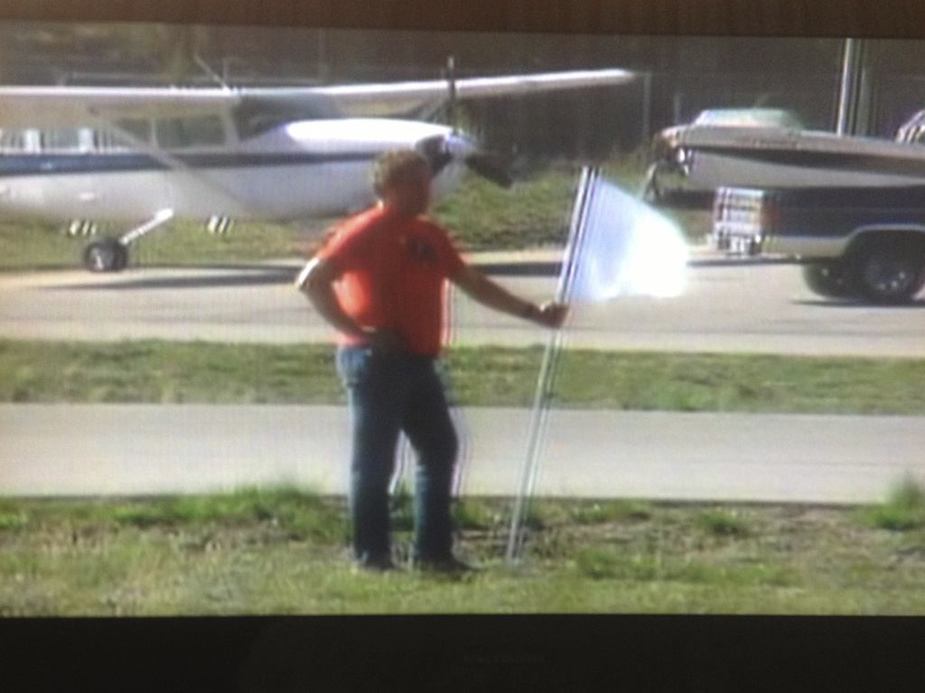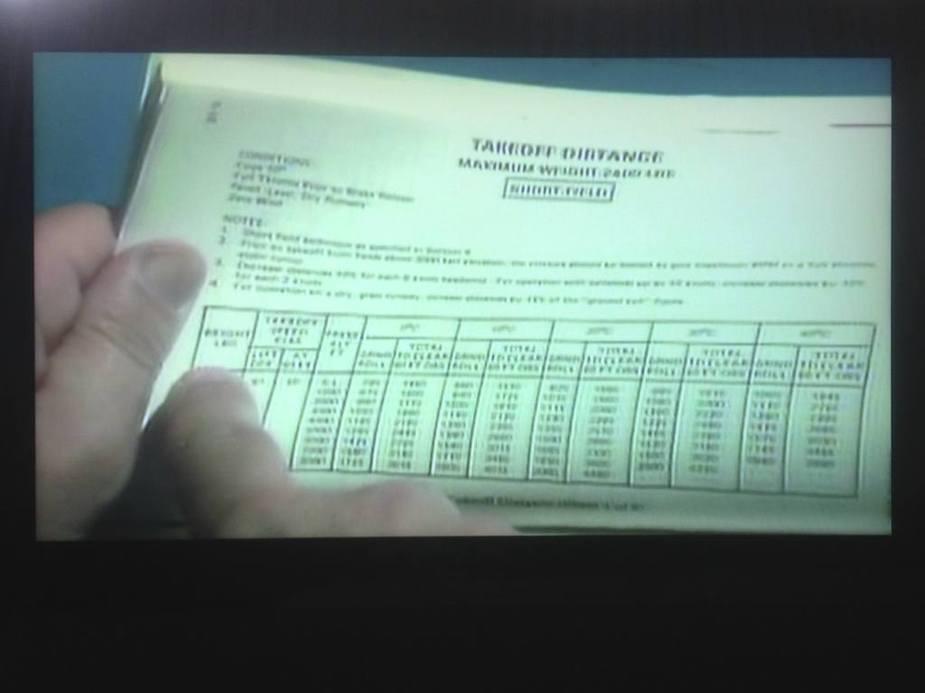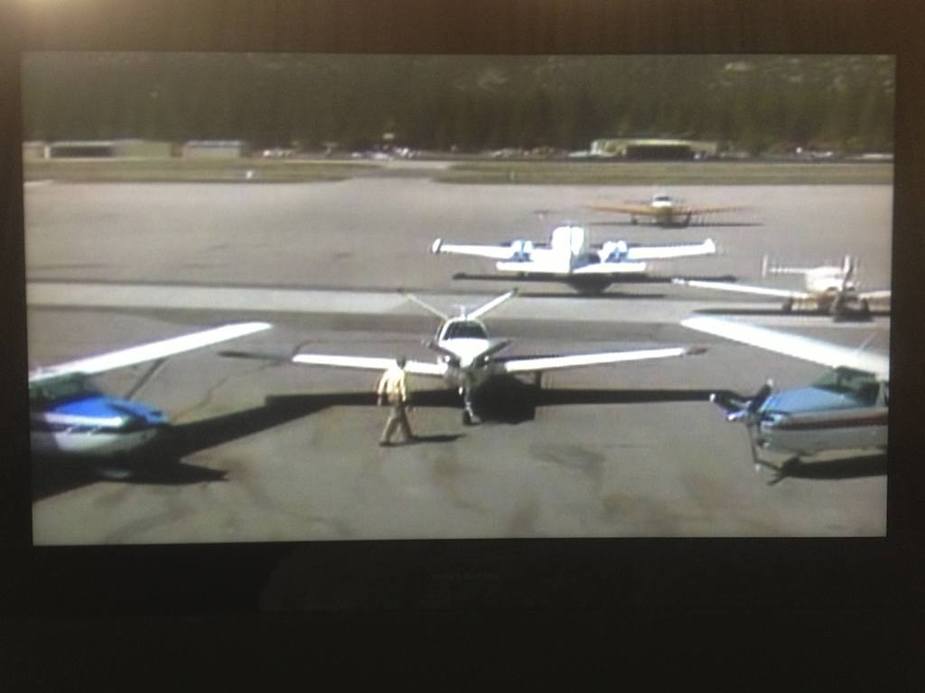I did similar tests in my Bonanza, but using a WAAS enabled data logger logging 4 times per second (moving about 25 feet between each data point). I found several interesting things
1 - the lift off point is reasonably clear (level within a foot or so over consecutive data points, then a monotone ally increasing altitude - but probably 50 feet down range of the actual lift off point) 2 - the ground speed was higher than expected 3 - the overall takeoff run was considerably longer than book (like the video) 4 - the distance to 50 feet was just about book.
This caused me to look in more detail at the POH and my technique as well as to try it on a nil wind day. From this I learned
1 - the wind at the wing is likely to be materially less than the reported wind (which is sort of obvious given the anemometer is probably 30 feet off the ground and the wing is 3!)
2 - in the take off roll for my aircraft, IAS is about 3 knots below CAS
3 - waiting until you see take off speed before rotating results in a couple of knot higher take off speed than book.
4 - accelerating at say 2 knot/second at around Vr means a 4 knot difference in rotation speed (accounted for by IAS v CAS and a half second to actually rotate) puts 20% on to my ground roll
5 - the increased time on the ground means I have more energy to climb so get to 50 feet quite a bit quicker than book, netting out to a distance to 50 feet being about book.
By carefully calculating the correct Vtakeoff (indicated) and rotating in anticipation, I get just about book takeoff roll.
The airspeed indicator could be off. The aircraft engine could not perform to book figures. There could be more reasons why it does not perform to book figures. Essentially we have to keep thinking for ourselves.
I recently wanted to fly to Nuit-St. Georges in the Bourgogne. It is a rather long grass strip next to a castle with nice swimming pool. It was on one of those bloody hot days and while departing on the paved runway at Rotterdam I thought to double check there how much runway I actually needed for the takeoff run with a short field departure technique and ... I needed with 4 people in the plane about 700 meters!
So, while flying enroute to this grass strip in the Bourgogne, I decided that in the afternoon the temps would be even higher there and I decided to divert to ... Paris Plages le Touquet. It was just common sense to me to not risk it on the grass runway on such a hot day with 4 souls on board.
I suppose that test could also demonstrate that you should not totally trust your ASI. Possibly a short take off should be best done without reference to the ASI, letting the aircraft fly when it wants to. Some aircraft are good for this technique, others not.
I am not a legal specialist but I recall reading that the very old operating manuals acquire some sort of legal protection, via being "established" for many years.
That is thought to be one reason why Lycoming have absolutely resisted updating their procedures for modern times. One can debate whether LOP gives you more MPG (I am sure it does not, other than via small second order effects) but for example the constant-EGT climb profile seems clearly beyond dispute. All the time the old manuals remain current, Lyco cannot be sued over anything in them.
It's probably also hard to find somebody who can write 
Sound advice for those who want to live :)
But from a legal angle isn't that interesting? What if he had hit the fence down the other end of the runway, he was operating to manufacturing instructions, so would that push liability on to the manufacturer?
I hope no one tries that because they will then update the POHs with take off rolls measured in NMs.
The well known aviation author Barry Schiff made a video in the series "Wonderful World of Flying" where he compares the takeoff roll of 3 common aircraft at that time (70's I assume): a Cessna 172, a Beechcraft Bonanza and a Cessna Turbo 210.
The test was done on a hot day at the Big Bear City Airport which lies at about 7000 feet altitude. The temp outside was 30 degrees (90F) with a DA of more than 10.000 feet.
He posted people along the runway to mark his takeoff point.

The Performance charts of the C172 for the short field takeoff roll indicated a rotation speed of 51 knots and a takeoff roll of 1815 feet. He loaded the aircraft according to book specs, set 10 degrees flaps and leaned for max RPM and applied full power before brake release. Instead of the takeoff roll being 1815 feet according to book figures it was 2200 feet in reality.
 )
)
The Bonanza was loaded to 3400 lbs, takeoff with no flaps as specified in the books and rotation speed of 71 knots. According to the POH he would have needed 2250 feet, while he needed 2750 feet in reality.
For the Cessna Turbo210 which was loaded to 4000 lbs, the ration speed was 72 as indicated in the POH and instead of 2140 feet for the ground roll, 2400 feet was needed.

The 3 different aircraft used in the test, both with fixed pitch propellor and variable pitch propellor.

Aircraft were loaded to book specs with sand bags.
His conclusion was: never trust book figures and test it for yourselves on your own aircraft.
I cannot believe a fixed pitch prop is going to get untwisted over time.
I read somewhere that the radial stress on a prop is about 1/4 of its tensile yield value so if anything was going to move it would be the diameter of the prop which would grow, and obviously this doesn't happen in reality.
Much more likely, props get changed for slightly different ones and nobody updates the POH.
Mmm... To add a bit of humour on the prop sub-topic of this thread... So I spent a bit of time doing some googling, maybe I should have done that before I first went to print. Anyway, not easy to find but I have found a few posts which indicate two small schools of thought and a large school of thought. The large one, is that nothing really happens to a prop over time, and the two small ones... Well one that the prop flattens and the other that the prop angles increase over time.
I suppose the point is that such deformation (if indeed it does occur) would not necessarily indicate fatigue....which is related to cyclic stress....(I'm an engineer too!)
Let's take a bigger step back.... Um, no, the aerodynamic characteristics of a certified fixed pitch prop will not change, unless acted upon by an outside force. Air, and rotation in the intended plane, will never be those forces.
Propellers are type certified, and required to maintain the characteristics of their certification as long as they wish to remain type certified. They will not change in normal use at all.
Now, for comparison sake, many rotor blades are subject to deterioration from fatigue, and other forces. They were born with life limitations, which when followed, will assure that they do not change their characteristics during their "safe life".
Those airworthiness limitations are "approved", and thereby mandatory, unlike manufacturer's "recommended" limitations, like an engine TBO.
So, an airworthy prop (means it does conform to its type design), on an airworthy engine, in an airworthy plane, will assure that the plane will have its certified performance, no matter the age of the plane.
If propeller/engine/airframe condition are a detectable factor in takeoff distance factors, one or more of them is not airworthy.
A 1951 Super Cub with a vintage set of drum brakes means that under most circumstances you can indeed take off from any landing strip you have landed in. With other G-aircraft I use the CAA AFM charts which have the public factors applied - plus the safety sense factors with respect to grass, gradient, etc
With the SC and some headwind I tend to use 500 yards, with the factored length for a no wind grass runway being 440 yards. Shorter strips I would go in lighter, with a headwind. The SC with average skill and minimal braking will get into 400 yards, but having a margin brings peace of mind. A light SC will take off and clear 50 feet in 250 yards. If your flying is mainly into grass of around 600 yards, I would suggest a farm strip aircraft and not try and shoe horn a complex, faster aircraft.